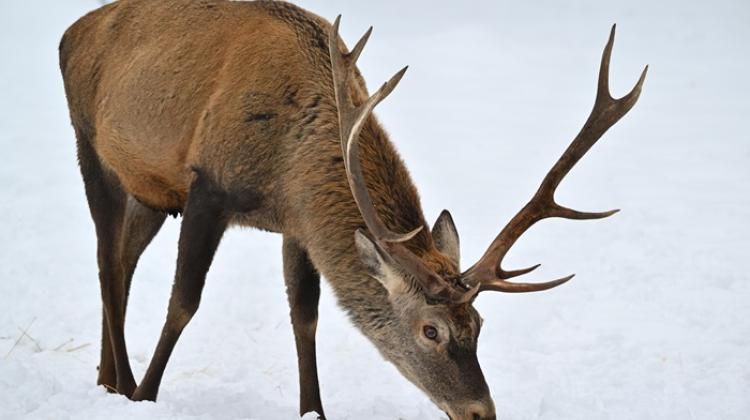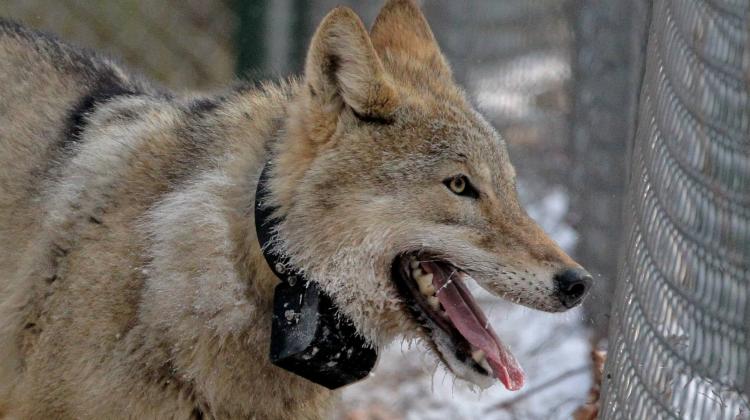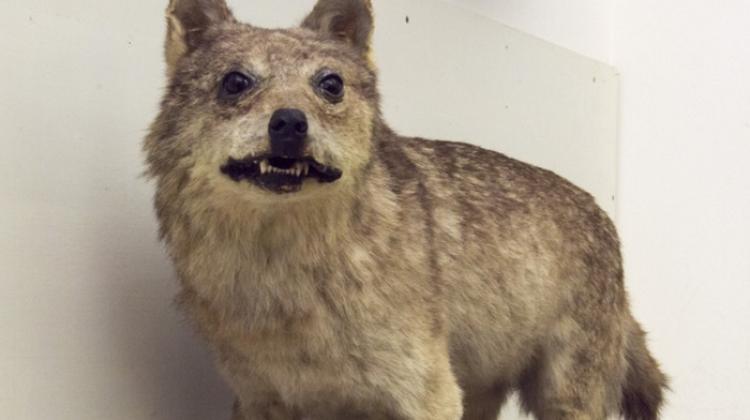Amid growing concern about wolf attacks, experts discuss the best way to protect them
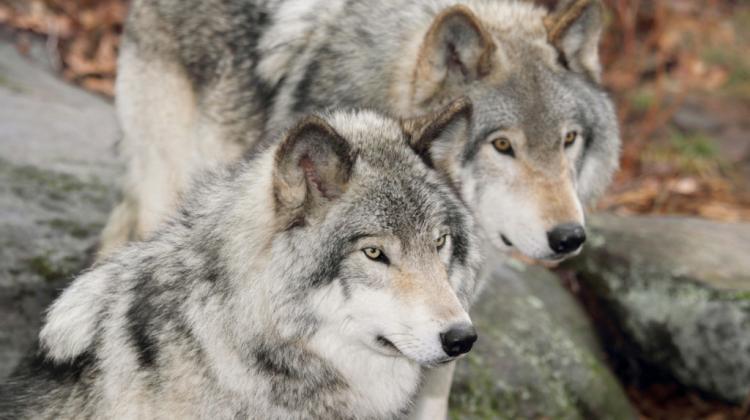 Credit: Fotolia
Credit: Fotolia
Over 20 years of strict wolf protection laws has allowed the population to grow in Poland, but public opinion is divided over whether it is safe for humans or not.
In the 1970s, wolves were nearly extinct, and the few that remained (about 100 individuals) lived only in the east of the country. In 1998, wolves (approx. 500 at the time) were given the status of protected species. By 2018, their number had increased to about 1,900 animals, and their range of occurrence expanded to almost all of Poland.
In May, Professor Krzysztof Schmidt from the Mammal Research Institute PAS in Białowieża told an online webinar entitled ‘How to protect the wolf in Poland’: “What we are currently seeing in Poland is an expected and desirable effect of many years of protection of this species.”
In Europe and North America in the last 18 years there were 12 wolf attacks on people, two of them fatal. There are a total of 75,000 wolves and hundreds of millions of people on both continents (K. Schmidt)
But, he added that the public is currently divided in their views about wolves, saying that for some “the presence of wolves is terrifying, they are afraid that wolves are everywhere and will start attacking soon.”
Schmidt continued: “In the post-war years, the wolf population was estimated at around 800, and on this basis it was determined that they should be eradicated. The issue of numbers is therefore relative. What's more, these numbers are very uncertain; we do not really know how many wolves there are. Counting methods not reliable enough to use these numbers for the purposes of species management.”
WOLF AS A COG IN THE MACHINE
The goal of protecting the wolf, he said, was to restore the population in its historical range and its ecological role in the environment. That goal was declared in justification to the 1998 regulation, which introduced the protection of the wolf throughout the country.
The wolf is a natural regulator of the numbers and condition of game animals. The example of North America, where the wolf was exterminated in the area of over half of its earlier range, proves its importance in ecosystems. As a result, the deer population increased significantly along with the damage deer caused in the environment. Research in the Białowieża Forest also showed that the presence of wolves is linked to the reduction of deer reproduction and permanently reduces their numbers by approx. 30-40 percent. Another ecological mechanism emerges from research in North America and Europe. In the places in the forest, where wolves 'simply visit', deer clearly change their behaviour: they are more vigilant and feed more quickly. This promotes the rejuvenation of the forest.
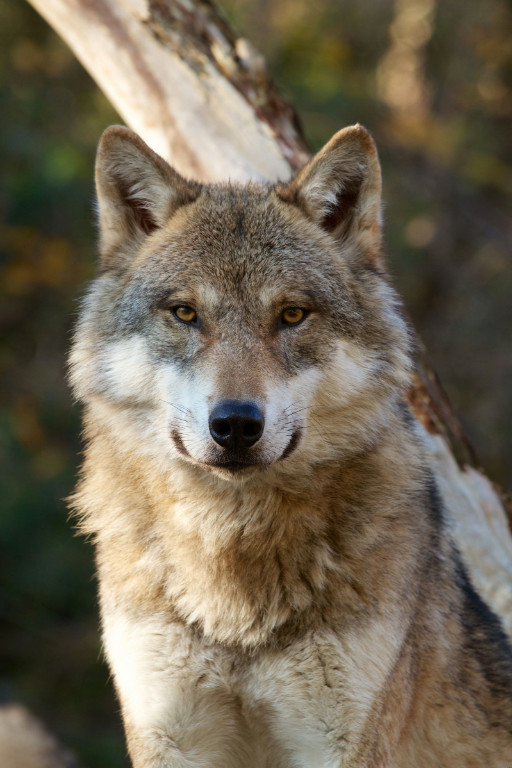
Wolf. Credit: Fotolia
But, the appearance of wolves in new areas raises fears, including those concerning the damage to domesticated animals. Professor Schmidt said: “In Poland, west of the Vistula, where wolves have recently appeared, these damages are incomparably smaller compared to what is happening in the east of Poland, where wolves have existed for a long time. However, there are plenty of ungulates in the west. They constitute a buffer that enables the peaceful existence of wolves in newly colonized areas.”
As an example, he pointed to three US States, Idaho, Montana and Wyoming, where wolves are subject to various control methods: the packs are removed completely, partly or protected. He said: “In the places where wolves have been completely exterminated, the damage practically ceased. But in the areas where they have been only partially removed, damages still occur and are not much smaller than in the areas where the wolves are protected. The conclusion from this research is that if we want to avoid this damage, we must exterminate all wolves. I do not know if that's what we really want.”
He also cited data from Estonia, where, despite wolf culling, the damage caused by wolves continued to happen.
The level of damage to farm animals can be reduced through non-invasive methods: good fencing, the use of several layers of electric fence or fladry lines. Additional helpful measures include shepherd dogs, calving control, and in extreme situations direct deterrence of wolves with rubber or flash ammunition, he said.
HOW FREQUENT ARE THESE ATTACKS?
Referring to concerns about wolves attacking humans, Schmidt cited the results of research conducted in the 1990s, also in the Białowieża Primeval Forest, according to which wolves in the studied areas avoided people. This is confirmed by more recent studies with the use of camera traps: the greater the distance to buildings, the more likely it is to encounter a wolf.
He added: “This, of course, does not change the fact that a wolf is capable of killing a human.
“But a review of the last 250 years of documentation from Europe, the USA and some Asian countries shows that although there were hundreds of human victims of wolf attacks, these high numbers concern the 18th and 19th centuries, with statistically 700-800 deaths per century and on average 7 cases per year.”
In the 50 post-war years, only nine cases of wolf killing a human were recorded across Europe. They took place only in Spain and concerned the population from the northern part of the country (K. Schmidt)
He noted that these numbers dropped significantly in the 20th century. In the 50 post-war years, only nine cases of a wolf killing a human were recorded across Europe. They took place only in Spain and concerned the population from the northern part of the country. The food sources of the wolves living there are associated with human activity - they are farm animals and landfills. The attacks occurred in the 1950s and 1960s, when many children were left unattended; they were the targets.
The authors of the 250-year report also summarized the available data for Europe and North America for the last 18 years (2002-2020). During that time, there were 12 wolf attacks on humans across the area, two of them fatal. Professor Krzysztof Schmidt points out that there are 60,000 wolves in North America, and 15,000 in Europe. At the same time, the two continents are inhabited by hundreds of millions of people, which in practice means that the risk of wolves attacking people 'is very low'.
He reported that relatively many cases of wolf attacks on humans occurred in Asia. This mechanism was analysed in detail in the Iranian province Hamedan, where as many as 53 wolf attacks on people, including five fatal ones, were recorded over 11 years.
Schmidt said: “It was found that the risk of attacks was increased due to the drastic conversion of habitats: the conversion of natural areas to farmlands; high densities of the human population, no natural prey, and above all the fact that the largest concentrations of free-walking farm animals and huge landfills were near the buildings. Although wolves are predatory, they also digest plant food and can survive on food waste. Leaving children unattended is also a problem; the authors mention that in Iran, children tend to shepherd farm animals.”
Despite these problems, the wolf is still under protection in Iran. At the same time, the locals try to 'take revenge' on it and fight it intensely with firearms, traps or poisons.
LANDFILL: A WOLF MAGNET
Schmidt said: “We often say that wolves not subject to hunting can lose respect for humans and approach human settlements. The example of Iran shows that hunting does not cause fear. The factors that make wolves accustomed to humans are parts of our activity: leaving open landfills near human settlements, unchecked grazing of animals. Such factors may cause a lack of fear in wolves and promote the association of humans with the availability of food.”
According to Schmidt, in order to protect the wolf, man and livestock, we should avoid creating landfills close to villages and towns. In addition, wolves must have access to wild ungulates - and no access to livestock. Another issue is securing domestic dogs.
He said: “A wolf can sometimes appear near a human. If it happens too often, you have to watch and react, and when you see wolves near buildings, think about what could attract them: landfills, access to farm animals... This has to be analysed and appropriate steps should be taken. We have ready scenarios, we know how to behave. The problem is to inform the public about it. When, despite the removal of all attractants, the wolf still appears near human settlements - there is a possibility of culling.”
According to the the Committee for the Protection and Management of Natural Resources at the Polish Academy of Sciences Branch in Olsztyn and in Białystok, it is advisable to maintain strict protection of the wolf in Poland. Schmidt continued: “In the event of a conflict, the wolf can be removed. The scale of the problems that wolves pose does not yet justify a change in its protection status. Regular hunting is not an effective way to prevent damage caused by wolves. Non-invasive methods are available and have been tested, they should be used.”
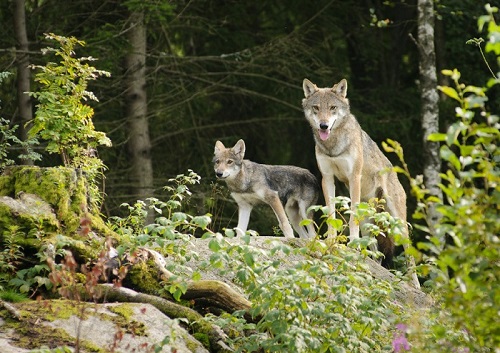
Wolf. Credit: Fotolia
During the webinar, the situation of the wolf was also discussed by Professor Henryk Okarma from the Institute of Nature Conservation of the Polish Academy of Sciences in Kraków. He said: “No one has any doubts that the wolf should be protected in Poland. The question is, how to do it? I believe that at the present stage strict protection of the wolf is unsustainable.
NO LONGER ENDANGERED
“Thanks to decades of action, the negative trends that kept the wolf populations low have been reversed. Many local populations have been saved, new ones have emerged, for example, in Europe and North America; other populations have seen a very strong expansion. The wolf now lives in almost half of Poland's territory. This is the largest known range of the species after World War II.
“We have been so effective as protectors that in many countries the wolf has been idealised, detached from its nature as a wild animal. In Poland, we are at a point that can be called extreme wolf protection. We have built - and we are still building in the mainstream media - an idealistic image of the wolf, a humanised image of this species.”
CONFLICT AND ACCEPTANCE
Professor Okarma said that since the wolf is no longer an endangered species, we need a new strategy for its protection, different from the previous one, which led to the wolf's 'expansion', and which 'cannot be used now, when the wolf is clearly in great conflict with man'.
He said: “The new strategy should constitute adequate, flexible population management to ensure the existence of the entire species through the greatest possible public acceptance, especially by those communities that directly deal with the wolf and that can have the greatest direct impact on it. They are breeders and hunters. With all due respect to metropolitan communities and various non-governmental organizations that have no direct contact with the wolf and the effects of its activities.”
We need a new strategy that cannot be based on the slogan 'save the wolf'; a strategy that will build wolf protection based on the conscious social acceptance by various groups, and not on legally enforced strict protection as it is today (H. Okarma)
According to Okarma, the goal of wolf protection today should be 'to ensure the safe functioning of this species in the current situation with maximum public acceptance'. Among the tools he mentioned is zoning (where wolves can live and where they may not), removal from the list of protected species and population control.
Okarma pointed out the problems he believed were likely without a new conservation strategy for the species. In the northern hemisphere, wolves can live virtually anywhere as long as they have an abundance of food of all kinds, including carcasses, human food waste, livestock and even domestic dogs. As he said, they have a high reproductive potential, which “will in turn mean that more wolves will appear closer to humans, which will inevitably cause an even greater escalation of problems.”
SMALL DISTANCE, BIG PROBLEM
He considered the biggest problem to be the wolf's decreasing distance from humans, 'which could potentially have worse consequences'. According to the professor, 'legally enforced coexistence, not accepted by important social groups, will inevitably lead to stronger conflicts, unrest, stronger polarization between urban and rural populations, and increasing man-caused wolf mortality, be it legal (elimination), illegal or accidental'.
Okarma continued that the best environments in Poland have already been occupied by wolves. He added that 800 new individuals appear every year. “The question is,” he asked, is “where will they go, since these places are already taken? What will they hunt wherever they go - in agricultural areas, suburban areas, on the outskirts of big cities? Who will catch the problem animals? How many special pens, like the one for the female wolf from Białowieża, will we build? Who and how much will pay for their sustaining them? And what if there is a serious wolf attack on a human occurs, that even wolf lovers will not be able to question? What will politicians, who tend to make irrational decisions, do then? This means they will be under pressure and a decision will be made to cull half the wolf population in Poland. Is this how the species should be rationally managed? I think not.”
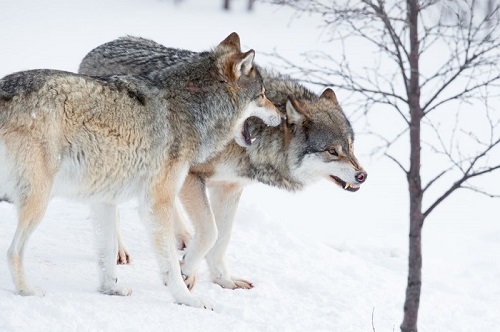
Wolf. Credit: Fotolia
Speaking about the need for a new wolf protection strategy, Okarma recalled the 2011 publication (National Canis lupus wolf conservation strategy, determining the sustainability of the species population in Poland), which - together with Roman Gula and Piotr Brewczyński - he co-authored. It proposed the creation of a special wolf advisory group at the General Director for Environmental Protection (or at the minister responsible for the environment), composed of representatives of various communities: 'conservators, but also anti-wolf, including hunters'. He said: “We also need to implement a nationwide, reliable species monitoring system. There is no such system to date. Thirdly, we need to develop a species management plan based on its maximum acceptance by all social groups.”
Okarma also suggested a shift from the concept of strict wolf protection towards active population management 'which would allow for more flexible reactions in different situations'. He added that the management plan should include controlling the size of the population according to strict rules stipulating where, on what terms and how many wolves should be culled.
He said: “It should guarantee a reduction in damage to livestock. Hunters, 120,000 people, should be involved in the protection measures concerning the wolf. Hunters must be made into supporters of the protection of this species, not an excluded group. I propose that at the moment, the wolf should not be a game species; maybe one day it will.”
He added that this program was rejected, while in Croatia, Finland and Estonia wolf conservation plans or management plans take into account its acquisition (killing - PAP); include population control, whether as a game species or as a protected species.
PAP - Science in Poland, Anna Ślązak
zan/ ekr/ kap/
tr. RL
Przed dodaniem komentarza prosimy o zapoznanie z Regulaminem forum serwisu Nauka w Polsce.





